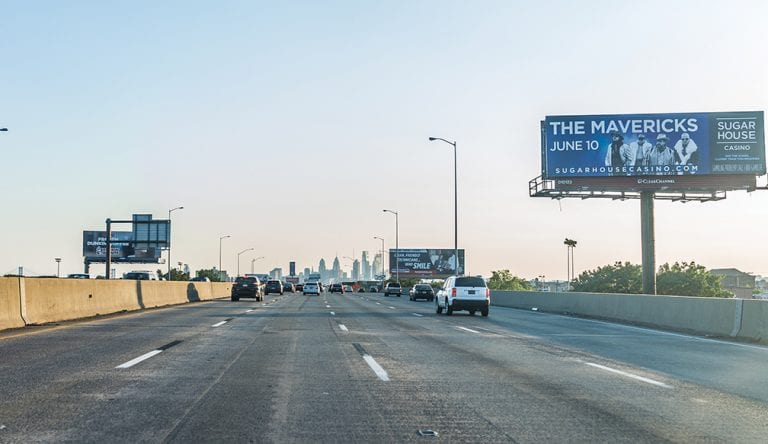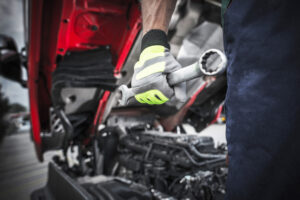Every driver understands the danger of being distracted while driving. At the same time, every driver gets distracted. The results can be deadly.
The National Institute for Occupational Safety and Health (NIOSH), part of the Centers for Disease Control (CDC), reported that 14% of all motor vehicle crashes in 2018 involved a distracted driver, resulting in 2,841 deaths. NIOSH also reported that “research suggests that distraction is present during 52% of normal driving.”
For the driver of a commercial motor vehicle, even a minor accident caused by distraction can result in loss of a job or commercial driver’s license (CDL). It’s important to understand how distractions occur so they can be avoided.
For the professional truck drivers, however, there’s more. It’s important to understand that OTHER drivers can — and will — be distracted, and to know how to avoid the hazards those other drivers create.
NIOSH groups distractions into three distinct categories, although there is some overlap and some distractions fit into more than one.
Visual distractions
Visual distractions can be anything that takes your eyes off of the road, such as reading a text message, looking for directions or the ever-popular “rubbernecking” when passing an accident (or another truck that’s been pulled over by law enforcement). Road signs can be a visual distraction, as can billboards or business signs. Even dashboard gauges can be a distraction.
When considering visual distractions, it helps to think of speed in terms of feet per second (fps) rather than miles per hour (mph). To make the conversion, multiply your current speed by 1.466535; you can also just multiply your speed by 1.5 for a rough, but close enough, estimate. Traveling at 60 mph is nearly 90 fps (actually 87.99).
If you’re heavily loaded and traveling 60 mph, and your eyes focus on a distraction, you’ll cover 90 feet without seeing the road ahead for each second you’re distracted. A four-second glance covers 360 feet, just 10 feet short of the distance needed to stop a truck at that speed. A lot can happen in the road ahead during those four seconds. Depending on the direction of your gaze, you may gain some benefit from your peripheral vision — but will it be enough to warn you in time?
Billboards are designed to attract and hold your attention. Artwork and catchy phrases keep your eyes on the sign just a little longer, perhaps long enough to memorize a phone number or website. Billboards in high-traffic areas often present multiple messages through mechanical displays or video, increasing the attraction.
They key to minimizing visual distractions is to keep up an active eye scan. Most humans have a field of vision that covers about 190 degrees, but only 12 or 13 degrees are in focus at any one time. Turning your head, or moving your eyes, allows you to see more in one direction while “hiding” information in another. Don’t allow your eyes to rest anywhere for more than a second or two.
Manual distractions
Manual distractions are those that take your hands away from the steering wheel. Reaching for objects, eating or drinking, and even using dash switches or knobs are included in this category.
Functions such as shifting gears, turning on lights or wipers, and adjusting climate controls are a part of the driving job. Those tasks can’t be avoided, but drivers can sometimes alter the timing a bit. For example, most drivers turn on the headlights before it gets too dark to see. Adjusting the air-conditioner setting can wait for the right moment — which is when you’re not in heavy traffic.
Preparation is often the solution to manual distractions. Eating, for example, is best done when the vehicle is stopped, but if you choose to eat while driving, unwrap food items and place them within easy reach before starting out. Put straws in drinks, have napkins handy and minimize the number of things you’ll have to do while the vehicle is moving.
Other preparation, such as using pre-set radio stations or pre-setting temperature controls so that only small adjustments are needed later, is helpful.
Cognitive distractions
Cognitive distractions take your mind from your primary purpose of safely driving the vehicle. Intense conversations, either on the phone or with a passenger, or even thinking about how angry you are with your dispatcher, are examples of cognitive distractions.
Cognitive distractions are often emotional in nature. Even if you’re using a hands-free device for your phone, it’s a good idea to pull over if a conversation gets emotional. If you’re dealing with an upset spouse, fuming over a traffic stop or planning to give a fleet manager a well-earned piece of your mind, it’s better to park first. Anyone who is likely to call you should know that they should ask you to park and call back if the conversation is likely to be emotional. If they don’t, you should take control of the conversation, and tell them you’ll call back when your attention isn’t needed for driving.
Finally, remember that motorists around you are subject to the same types of distractions, and then some. Teenage drivers are more likely to use cellphones while driving. Young parents may be trying to deal with disruptive children. Couples could be arguing — or getting amorous — while the vehicle is in motion.
Professional drivers have seen just about everything going on in a four-wheeler at one time or another. Since a part of driving safely is anticipating the actions of other drivers, it only makes sense to be prepared for those actions.
The word “assume” has some negative connotations, but it’s an important part of anticipating hazards. Assume that car on the shoulder will pull out suddenly. Assume that person looking at her phone will weave, possibly leaving her lane. Assume that guy looking at the accident across the median isn’t aware of your presence.
Assume — and then protect yourself by leaving space and being prepared to react when the hazard occurs.
Much of safety performance comes down to attitude. Those who believe they are so highly skilled that attention to distractions isn’t necessary will one day regret that attitude. Those who understand that they, too, are susceptible to distractions and take steps to minimize the hazards will be rewarded with more miles of safe driving.
Cliff Abbott is an experienced commercial vehicle driver and owner-operator who still holds a CDL in his home state of Alabama. In nearly 40 years in trucking, he’s been an instructor and trainer and has managed safety and recruiting operations for several carriers. Having never lost his love of the road, Cliff has written a book and hundreds of songs and has been writing for The Trucker for more than a decade.








